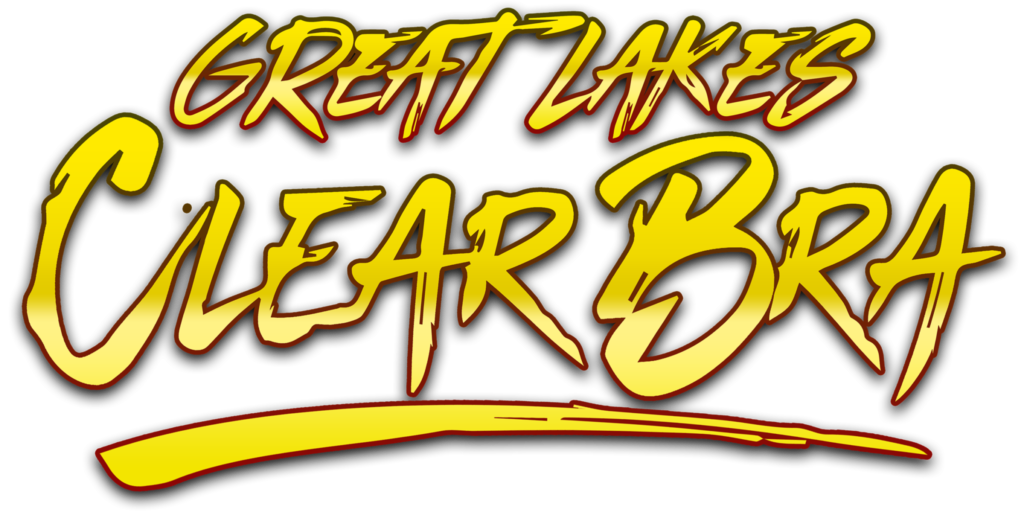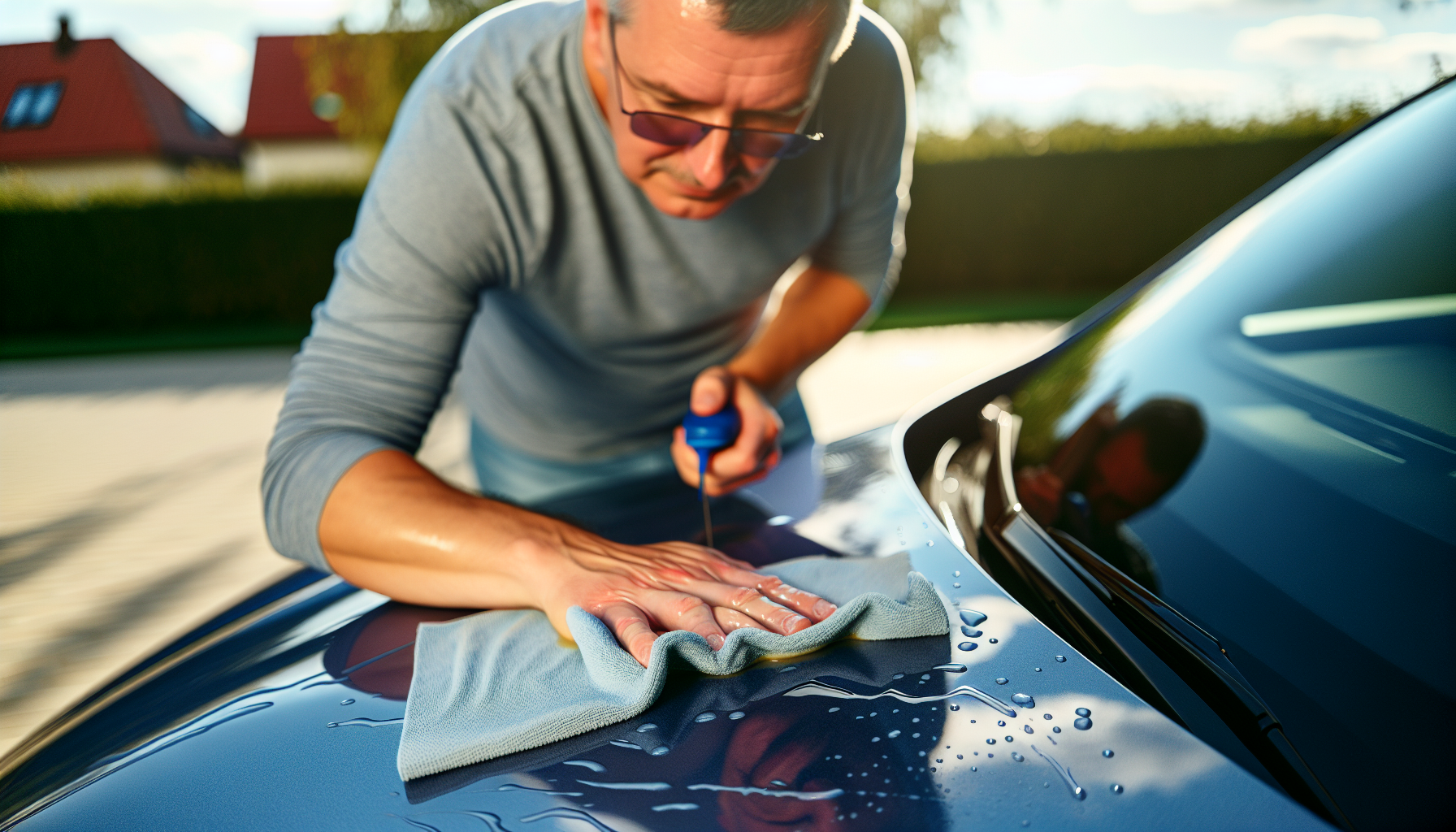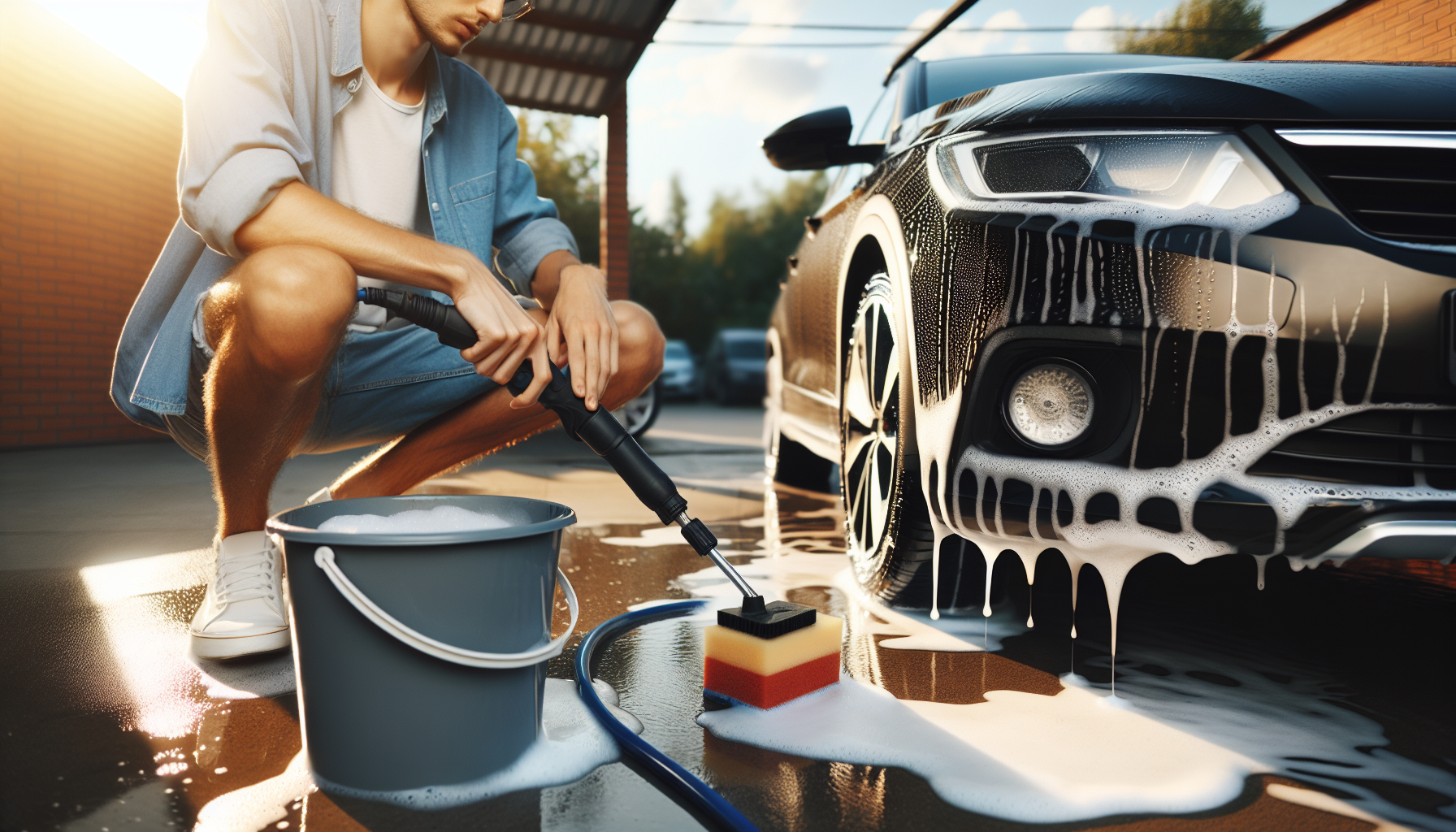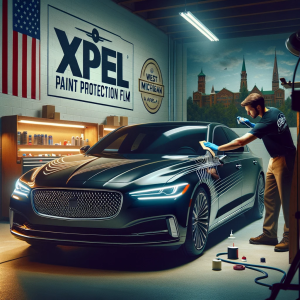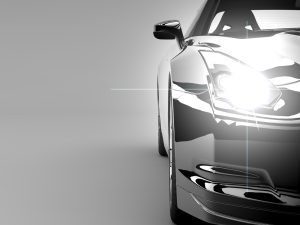
Understanding the Disadvantages of Paint Protection Film: A Balanced Perspective
Automobile enthusiasts and everyday drivers understand the significance of maintaining a vehicle’s pristine paint job. Paint Protection Film (PPF) has emerged as a popular solution, lauded for its protective capabilities against various threats. Yet, like any product, PPF is not without its drawbacks. As we navigate the labyrinth of PPF, we’ll unearth some of these lesser-known disadvantages of paint protection film, offering a balanced perspective for potential users.
Key Takeaways
Installation of paint protection film presents challenges and risks that require careful research to find a skilled installer.
Regular cleaning, upkeep with mild soaps and water, and isopropyl alcohol for tough stains are essential for maintaining PPF.
Weighing the pros & cons of PPF is essential to make an informed decision about its suitability, considering installation challenges, maintenance costs & limitations in damage prevention.
Installation Challenges and Risks
PPF application, much like a well-executed paint job, is both an art and a science, necessitating the hands of a skilled installer to achieve that seamless finish. Several factors contribute to the complexity of installing paint protection film, such as the quality of the PPF, the installers’ skill level, and the unique aspects of vehicle coverage.
For instance, the adhesive on automotive paint protection film is activated using a heat gun and a touchless instant temp reader. This process demands technical precision and highlights the intricate nature of the film application. Not adhering to these detailed procedures can lead to an error-filled installation, which may compromise the effectiveness and transparency of the PPF, possibly impacting the vehicle’s factory paint.
Such potential errors might manifest as bubbles, the accumulation of dirt, or uneven coverage, all of which can negatively impact the paint job and the vehicle’s overall aesthetics. Thus, the installation process presents a significant challenge in achieving maximum protection from a PPF.
Finding a Skilled Installer
Securing a reputable and experienced installer forms a pivotal part of the installation process. Like a surgeon, a proficient PPF installer should boast a specific set of qualifications. These include:
A PPF Installer’s Certification
1-2 years of experience in PPF installation or a related field
Familiarity with computerized cutting systems
- Basic computer skills are also beneficial.
Specialized training, including manufacturer training, certification programs, and hands-on experience, is typically required for a PPF installer. This ensures the film’s self-healing properties are correctly applied, maximizing the protective potential of the PPF.
Conducting thorough research is advisable when identifying a reliable paint protection film installer. Reputable installers such as Great Lakes Clear Bra, a leading XPEL paint protection film dealer in Michigan, can minimize the disadvantages of paint protection.
Potential for Installation Errors
The potential for installation errors remains a constant concern, given the intricate nature and precision required for PPF application. Inadequate installation can lead to the PPF not achieving its intended effectiveness and transparency, potentially affecting the vehicle’s factory paint. Issues such as the formation of bubbles, accumulation of dirt, and uneven coverage can arise from improper installation, tarnishing the paint job and the vehicle’s overall aesthetic appeal. These errors underscore the importance of a skilled installer.
While the thought of potential installation errors can be daunting, it’s important to remember that these risks can be minimized with the right installer, thus highlighting the importance of selecting a reputable and highly skilled professional.
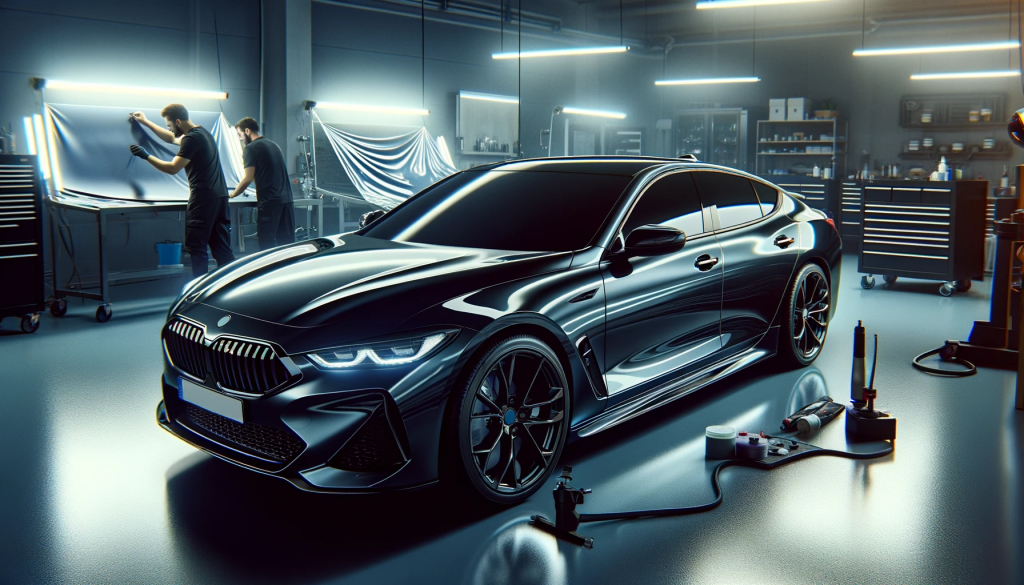
The Non-Permanent Nature of PPF
Despite the numerous benefits PPF offers, one must understand that it does not constitute a permanent solution. The film typically boasts a lifespan ranging from 5 to 10 years, during which it provides UV protection for your vehicle’s paint.
The warranties available with PPF products range from 5 to 10 years and exclusively cover manufacturer defects, unlike warranties for vinyl wraps, which may differ. This limited lifespan can disadvantage those seeking a long-term protective solution for their vehicle.
Therefore, while PPF can offer substantial protection against various threats, it’s crucial to remember that it’s temporary. Vehicle owners must plan for its replacement, adding to the long-term maintenance considerations and cost.
Maintenance and Care Considerations
While PPF might seem like a ‘set it and forget it solution, its effectiveness relies on regular cleaning and special care during washing. The hydrophobic nature of paint protection film reduces the likelihood of dirt and mud sticking to the car’s surface, simplifying the cleaning process and reducing its frequency.
It is advisable to utilize pH-neutral soaps and shampoos created explicitly for automotive surfaces, such as Chemical Guys car soaps, Americana Global Vinyl & PPF Shampoo, and other superior car wash soaps formulated for PPF use. These products ensure durable protection and help maintain the vehicle’s factory paint appearance.
Regular Cleaning and Upkeep
PPF necessitates regular upkeep to preserve its durability and efficiency, unlike the maintenance required for ceramic coatings. The maintenance of PPF requires using mild soap and water for cleaning and prompt removal of contaminants to maintain its stain resistance.
The recommended cleaning techniques for PPF include:
Using water or a cleaning solution with a microfiber cloth for general cleaning
Using warm water or quick detailer spray with a microfiber cloth for contaminants
Using isopropyl alcohol for tough stains
It’s important to use soft cleaning tools like microfiber mitts or sponges to prevent scratches and promptly wash off aggressive chemicals.
Therefore, while regular cleaning is necessary, it’s equally important to be mindful of the cleaning techniques and tools used. This will ensure that the PPF continues to provide optimal protection without compromising the quality of the vehicle’s paintwork.
Special Precautions When Washing
It is advisable to refrain from using soaps or waxes that contain naphtha, kerosene, or any dye, as they can potentially deteriorate or discolor the PPF. pH-neutral soaps and shampoos are created explicitly for automotive surfaces, and high-quality car wash soaps should be used when washing a car with PPF.
The appropriate wax selection is crucial due to the potential impact of ingredients such as naphtha and kerosene in certain waxes, which can lead to deterioration or discoloration of the PPF. To safely utilize a pressure washer on a vehicle with PPF, it is advisable to maintain a minimum distance of three feet between the nozzle and the film and to refrain from directing the water jet in a manner that could potentially lift the edges of the film.
Hence, certain precautions are essential when washing a car with PPF, from selecting suitable cleaning agents to the appropriate use of a pressure washer. These considerations ensure the longevity and effectiveness of the PPF, preserving the vehicle’s aesthetic appeal.
Limitations in Damage Prevention
Although PPF offers sturdy protection against diverse types of damage, it does come with certain limitations. For instance, it may not avert harm to a vehicle’s paint. PPF cannot prevent issues like faded paint or discoloration over time and may not offer protection against extreme impacts or accidents that can cause substantial damage to the paint.
Paint protection film, also known as car paint protection film, demonstrates high resistance to minor scratches and chips but may not withstand severe impacts or deep scratches. This limitation is especially significant in scenarios involving accidents or severe effects. Having paint protection film installed, however, can still provide a valuable layer of defense for your vehicle’s paint, including the paint underneath. Paint protection films offer a variety of options to choose from.
Therefore, while PPF offers substantial protection, it’s not a magic shield. Vehicle owners must know its limitations and keep realistic expectations of what it can and cannot protect against.
Aesthetic Concerns Over Time
As with any product exposed to the elements, PPF is susceptible to wear and tear over time. As time progresses, PPF may experience visual problems, including yellowing, peeling, and a decrease in overall aesthetic quality due to factors such as UV exposure and the buildup of contaminants.
Factors like prolonged exposure to UV rays, the buildup of moisture, dirt, and debris, and the application of abrasive chemicals, as well as environmental elements such as dust, bird droppings, acidic rain, and tree sap, can contribute to the yellowing and degradation of PPF over time. Measures such as avoiding prolonged exposure, safeguarding the film from UV rays, and maintaining it properly by addressing any damage or scratches can prevent the peeling of PPF.
The self-healing capabilities of PPF also play a crucial role in preserving the vehicle’s appearance by autonomously repairing minor scratches and swirl marks that may develop over time. However, despite its self-healing properties, PPF is not immune to aesthetic wear and tear over time, which is a crucial factor to consider.
Weighing the Pros and Cons
Behind the glossy allure of PPF, a nuanced landscape of pros and cons awaits every potential user’s navigation. It’s crucial to consider the drawbacks of PPF to make an informed decision about whether it suits your vehicle and usage requirements.
PPF is commonly associated with five specific disadvantages. These include:
The challenges and risks associated with installation
Its non-permanent nature
The maintenance and care considerations
Limitations in damage prevention
Aesthetic concerns over time
The price of PPF can also be a significant factor, with costs spanning from a few hundred to several thousand dollars.
Therefore, although PPF can offer significant benefits, these must be balanced against the potential drawbacks. Only then can you make an informed decision that will serve your vehicle’s needs best in the long run?
Summary
Diving into the world of PPF reveals a landscape with advantages and disadvantages. While it offers substantial protection against various threats, it’s not a magic shield. It requires a skilled installer and regular maintenance, and even then, it might not prevent all forms of damage or maintain its aesthetic appeal indefinitely.
In the final analysis, PPF is a robust tool in the arsenal of any vehicle owner keen on preserving their vehicle’s paint job. Yet, it’s crucial to approach PPF with a balanced perspective, understanding its limitations, and considering its potential disadvantages. Only then can you make an informed decision on whether PPF is the right fit for your vehicle?
SUPPORT
Copyright © Great Lakes Clear Bra 2024. All Rights Reserved.
